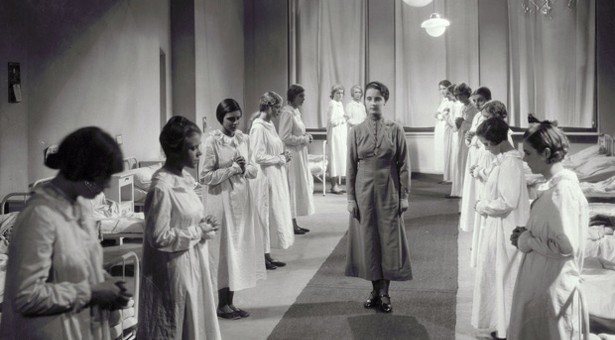David Parkinson: 100 Ideas That Changed Film

Česká verze recenze je dostupná zde / Czech-language version of the review is available here
British publishing outfit Laurence King Publishing has recently started a very successful series entitled 100 Ideas That Changed… Following publications on architecture and fashion (both published in September 2011), Laurence King released volumes on film (February 2012) and graphic design (April 2012) and is already planning publishing new titles focusing on art and photography (due this Fall). Each volume aims to introduce its readers to a given art form through the most significant concepts that have shaped its history.
100 Ideas That Changed Film presents its readers with a very eclectic selection of ideas and concepts that are all somehow crucial for study and understanding of cinema. The entries are organized more or less chronologically which means that the book also works as an alternative survey of film history. You can study the evolution of film technology – from Thomas Edison’s kinetoscope and the cinématographe designed by the Lumière brothers, through the introduction of optical transitions, color film stock, widescreen processes and 3D technology, to digital video and CGI (computer-generated imagery). Parallel to this line exists a history of film style with individual entries on the close-up, point-of-view shots, tracking shots, continuity editing, artificial lighting, flashbacks etc. Or you can study the history of national cinemas and various film movements that have emerged in the 20th century through texts on film d’art, narrative avant-garde, film noir, neorealism, free cinema, blaxploitation and queer cinema. Entries on nickelodeons, dream palaces, multiplexes and video explain how films were (and in many cases still are) consumed by film audiences.

Illustration accompanying the very first entry in the book which explains the magic lantern, one of the precursors of the film projector.
The number 100 in the book’s title is more or less arbitrary, of course; there could be, just as easily, 128 or 144 entries in the book. I can imagine, though, what a great challenge it must have been for David Parkinson, a film critic writing for Radio Times, Oxford Times and Empire, to squeeze the whole 120-year history of cinema into appointed number of significant concepts. Given the circumstances, the selection that made it into the book is representative and well-founded and covers industrial, technological, aesthetic and socio-cultural aspects of cinema. However, some might accuse Parkinson of being a little bit americanocentric because many concepts discussed in the book are predominantly or exclusively related to the Hollywood cinema (block booking, movie moguls, B movies, US independent cinema) or use American film industry as a springboard to a wider-ranging discussion (e.g. entries on genre and road movies). Even though they are in minority, there are also texts that cover topics only marginally or in no way at all associated with US cinema (poetic realism, Cannes, the Cinémathèque Française, third cinema etc.). If you’re interested in Czech and Czechoslovak representation in the publication, you might want to know that on several occassions Parkinson uses examples from the history of Czech and Czechoslovak cinema (Jiří Trnka is mentioned in the section on „Models“, Jan Švankmajer is cited in the entry discussing surrealism and both directors are used as leading exponents of European animation; FAMU alumni of the 1960s – Chytilová, Forman,Menzel – are also mentioned several times).
Each entry is assigned two pages with the text providing a concise definition of the concept and a short sketch of its evolution in time. Certain degree of simplification is thus unavoidable and shouldn’t be viewed as a flaw. Parkinson’s effort to squeeze as many facts and observations into the texts should be appreciated: there are only a few oversimplifications or inaccuracies (on several occassions, the release dates are not right; one of the most obvious errors is a caption accompanying a photograph from Glauber Rocha’s Antonio das Mortes, which erroneously identifies the film as Bolivian drama Blood of the Condor). The text is complemented by 300 well-chosen color illustrations and photographs, a useful glossary and an index. It is precisely the book’s attractive and practical design that guarantees you’ll want to return to the book again and again.
100 Ideas That Changed Film
David Parkinson
London, Laurence King Publishing
2012, 216 pages, 300 color illustrations
order here






